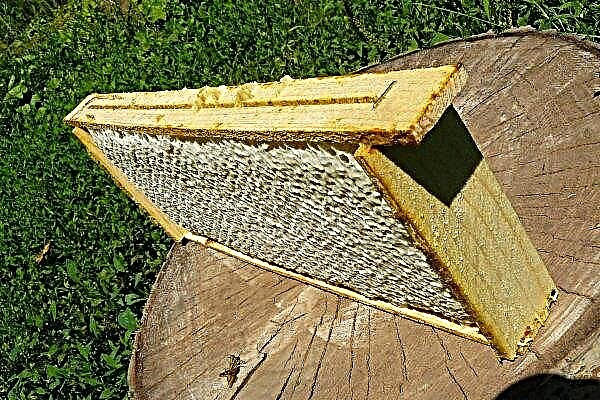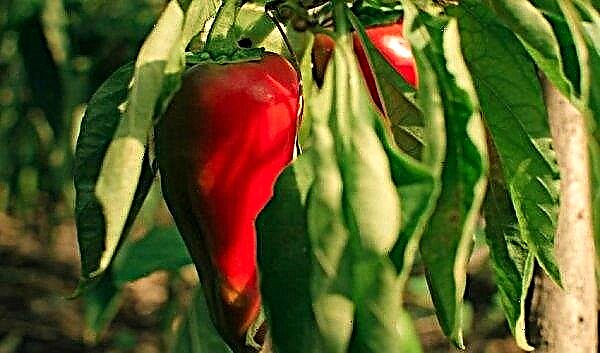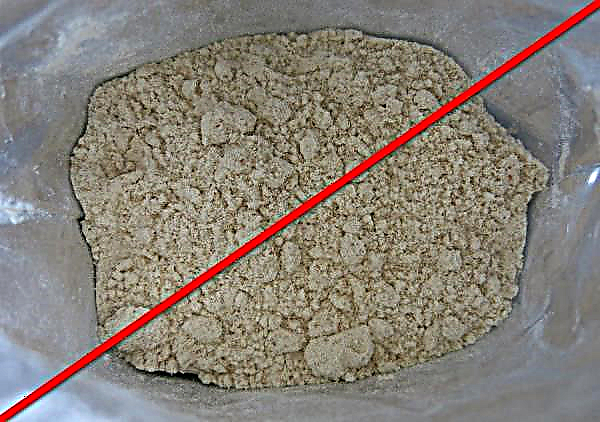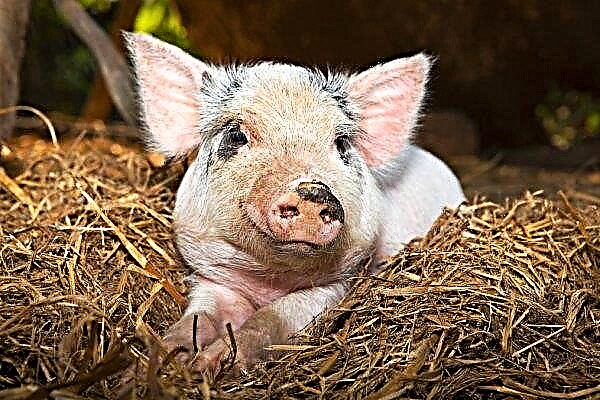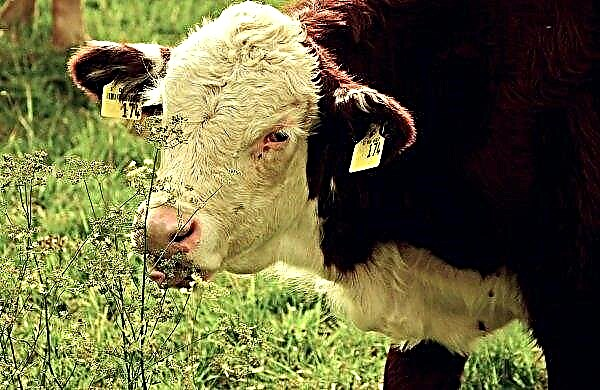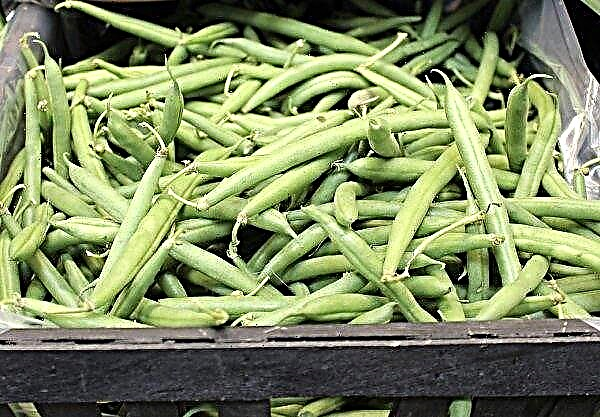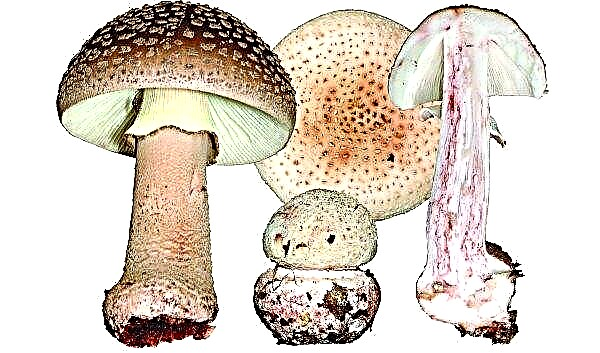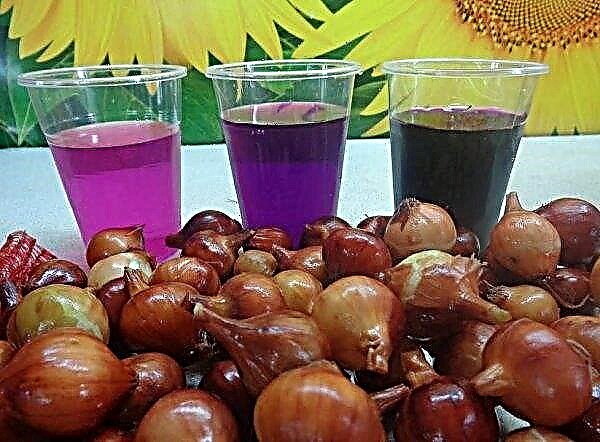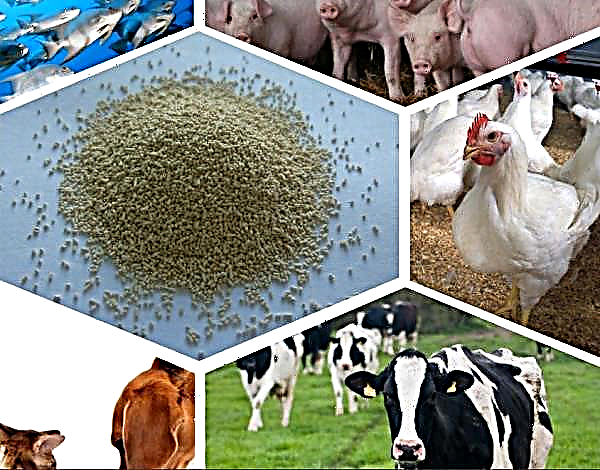Blue Carpet flake juniper belongs to evergreen shrubs. Most often he is met in the highlands. Due to the rich shade of needles, this plant has received huge demand among domestic gardeners. This article discusses the main characteristics of the species, as well as the rules for its cultivation.
Botanical Description
Blue Carpet was bred from Holland in 1972. Literally after 4 years, this variety received recognition and a gold medal at the international exhibition for high decorative qualities. The culture is adapted to the climatic conditions of Russia, therefore it is able to survive severe frosts, up to -40 ° C.

Description of scaly evergreen shrub:
- the height of an adult plant is not more than 30–80 cm;
- diameter - about 2 m;
- prickly needles 0.6 cm long;
- bark of saturated gray-brown color;
- shoots of a pleasant blue shade;
- blue cones appear in late summer;
- crown of creeping form. She looks like a thick carpet on the ground.
The most compact representative is considered to be Squamata Blue Carpet. The height of the bush is about 50 cm.
Did you know? Since juniper thickets are found in nature near coal seams, geologists managed to find the coal basin near Moscow.
The annual growth of the plant is about 10 cm, so the culture is referred to as fast-growing varieties. The life expectancy of juniper varieties Blue Carpet is about 250-300 years.
Landing
Growing squamous juniper is not difficult if the gardener takes into account several basic rules:
- choose the right soil and place for planting;
- adhere to step-by-step technology of planting;
- properly care for the culture.
Video: Juniper flake Blue Carpet
Seedling preparation
You need to go to buy quality seedlings to specialized nurseries. In them, planting material is stored in proper conditions and receives quality care. By purchasing plants in such places, you will be sure that the plant will grow healthy and beautiful.
When choosing seedlings, consider some features:
- closed root system;
- lack of signs of diseases and pests (spots, plaque, cracks, holes in the trunk);
- age - no more than 1 year.
Important! If you buy plants with an open root system, then you need to plant them during wet weather (April, May or early fall). Otherwise, the bushes will not be able to take root due to the excessive dryness of the soil and air.
3 days before planting, soak the planting material in solutions of growth stimulants. The best drugs are Radifarm and Fulvix. Both preparations must be diluted in the correct proportions so as not to harm the seedlings (40 g per 5 liters of water). The plants are kept in solution for 3 days.

Site selection and preparation
When choosing a place for planting, it is necessary to take into account the fact that juniper prefers to grow under the following conditions:
- Adequate light level. It is necessary that the sun's rays fall on the plant, but at noon it should be protected from direct light.
- Land with a neutral pH, not saline.
- Groundwater depth - at least 2 m.
Juniper variety Blue Carpet prefers to grow on neutral loamy soils. During the excavation of the site, which is carried out 2 weeks before planting, humus (20 g per 1 m²), peat (1 bucket per 1 m²) and sand (1 bucket per 1 m²) are introduced into the soil.

Landing process
Planting of planting material begins in the spring, when the snow melts.
A step-by-step landing instruction is as follows:
- Dig a hole about 70 cm deep.
- Fill the bottom of the pit with a 20-cm layer of drainage (crushed stone or pebbles).
- Fill the drainage system with turfy soil and peat.
- Place the seedling inside and sprinkle it with soil.
Important! Leave the root neck above the surface to allow air and nutrients to enter the roots. Do not crush the soil, as it will gradually settle itself.
The distance between the seedlings should be at least 50 cm and no more than 2 m. It all depends on how thick you want to make planting.

Juniper Care
Caring for squamous juniper is not difficult. It is quite unpretentious for watering and top dressing. The gardener will need to regularly loosen the topsoil in order to avoid moisture stagnation and remove weeds that provoke the appearance of pests. Forming scraps are not required, which greatly simplifies crop care.
Video: Juniper Care
Watering
Adult shrubs are characterized by resistance to drought, so they are watered no more than 2 times a month. For 1 plant, 30 l of settled water are used, so as not to increase the level of salt in the soil.
Young juniper is more demanding on watering. The irrigation interval is 1 week. Under each bush pour 20 liters of water. You also need to regularly water the crown. Do it every day. Irrigation procedures are carried out in the morning or in the evening, when there is no active sunlight, which can trigger the appearance of burns on the plant. If you live in a region with a dry summer, then you need to irrigate the plantings every day, using 10 liters of water per 1 bush.
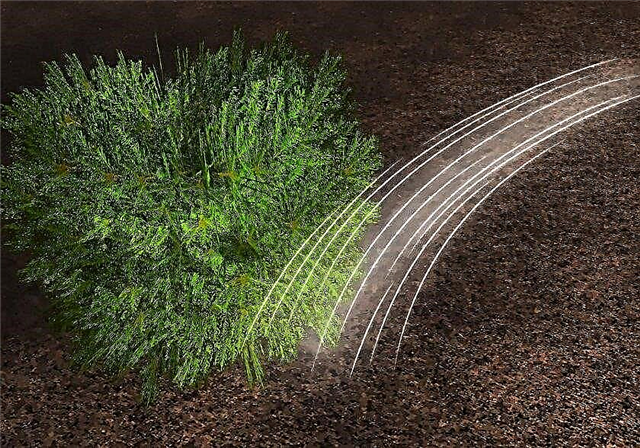
Top dressing
Fertilizers are recommended to be applied in the springtime, when the active development of juniper begins. In April and May, nitroammophoska is used (70 g per 10 liters of water), and the entire volume is poured under each bush.
In autumn, apply superphosphate and potassium nitrate (50 g of each drug per 1 plant). This will increase the frost resistance of the culture and retain moisture in the soil.

Loosening and mulching
Loosen the topsoil (to a depth of 5-7 cm) every week. Thanks to such actions, air and nutrients will be better able to penetrate the soil and root system. You also need to loosen the ground before each watering and fertilizing, so that water and nutrients do not linger on the surface.
The mulching of the trunk circle is carried out immediately after planting. For these purposes, use humus, spruce branches or fallen leaves. The layer of mulch should be at least 20 cm. This stage of care is necessary, as it allows you to control the moisture level in the soil and protects the shrubs from a sharp change in ambient temperature.

Pruning
As already mentioned, the variety of flake juniper Blue Carpet does not need to form a crown. Only sanitary scraps (in early spring) will be required. In the process, branches damaged by frosts, diseases and pests are removed. Dry shoots are also cut, which take most of the nutrients from the plant.
The procedure should be carried out before the sap flow begins, otherwise the bush may die. If necessary, if the juniper has slowed down or become less lush, anti-aging pruning should be performed. During the procedure, old shoots (over 5 years old) are removed.

Winter preparations
Despite the high frost resistance of the crop, young shrubs must be prepared for winter. In early October, juniper is covered with agrofibre, which is removed with the onset of spring heat. For adult plants, mulch will be enough, which they cover a month before the onset of cooling. They do not need additional shelter.
Possible diseases and pests
Blue Carpet juniper bushes often show signs rust (bright orange spots on the surface of the shoots). If the disease develops, then in a few years the plant will lose its decorative properties and die. The treatment consists in spraying the bushes with a solution of "Arcerida" (30 g per 10 liters of water). The processing interval is 10 days.

Culture may also be affected. drying out branches. The disease manifests itself in the form of brown growths on the shoots, as well as yellowness and dry needles. Against this disease, a solution of copper sulfate (10 g per 10 l of water) is used, which is sprayed every 2 weeks.

Trachiomycosis - This is a very common fungal disease that affects the juniper. Noticing the symptoms of this disease is not difficult. If you find dry branches on the bushes, it means that you need to urgently treat them with a Quadrice solution (50 g per 6 liters of water).
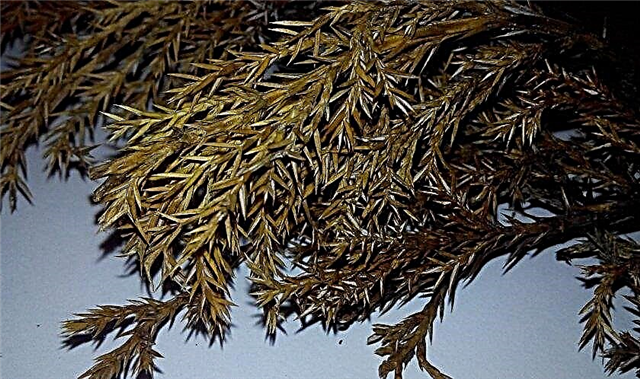
Of the pests can be found moth and aphid mining shield. Against the scab, use the Fitoverma solution (10 g per 5 l of water). In the fight against mining moths, Decis is used (30 g per 10 liters of water). An effective anti-aphid remedy is considered to be copper-containing "Oksikhom" (20 g per 10 liters of water). Spraying is carried out 2 times a month.
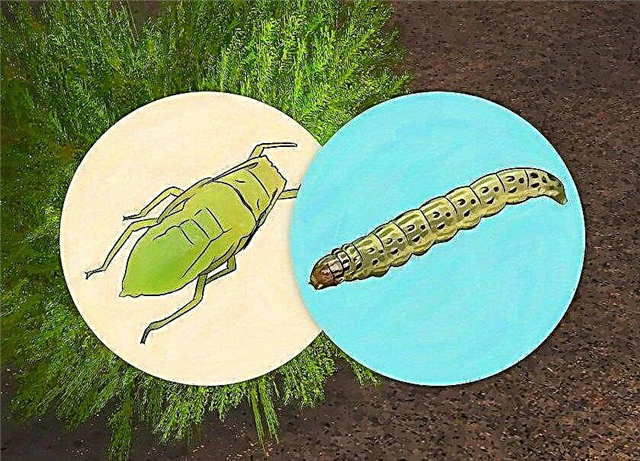
Breeding methods
Juniper Blue Carpet belongs to dioecious plants. This means that he has female and male bushes. You can determine the difference by crown. The female version of the plant has open bushes and loose needles, the male version has egg-shaped and narrow bushes.
Juniper is propagated in several ways:
- by seeds;
- cuttings.
Did you know? In ancient Russia, juniper was used to make dishes for storing milk. In it, it did not sour even on a very hot day.
The first method is used less often, since seeds have poor germination, and varietal characteristics may not be preserved.
This method is as follows:
- In the fall, collect the seeds and place them in a container.
- Place the container in a dry and well-ventilated area.
- Sow the seeds in open ground in spring.
- The first shoots will appear only in a year.
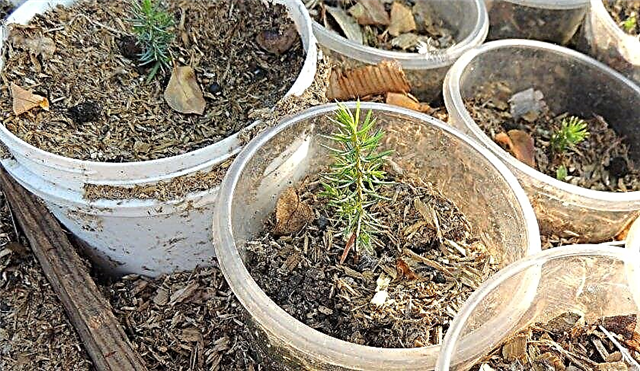
Propagation technology by cuttings:
- From an adult plant, shoots are cut at least 15 cm long.
- Clear the lower coniferous branches.
- Remove the old wood and soak the cuttings for 3 days in a solution of “Heteroauxin” (50 g per 5 l of water).
- Plant them in a mixture of soil and peat to a depth of 10 cm.
- Water the cuttings abundantly every day.
- After 3 months, the roots begin to develop on them. Then you can transplant planting material to a permanent place.
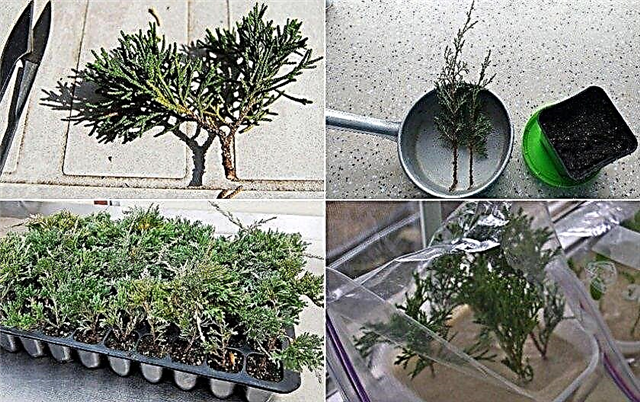
Use in landscape design
The Blue Carpet variety was especially popular due to its use in landscape design. This plant is planted in gardens, public parks and squares. With the help of this variety, single groups of flowers are created against a bright lawn. It can be combined with different annual crops.
Thanks to the creeping bush, the juniper flake grade Blue Carpet is used as a ground cover material. They are also decorated with slopes. Often, designers plant this variety along garden ponds to give the site more aesthetics and beauty.
So, now you know how to grow in your garden a beautiful and decorative juniper of the Blue Carpet variety. Due to its unpretentiousness and rapid growth, this culture has been recognized by most gardeners, therefore it is used not only to decorate private gardens, but also to improve the appearance of public gardens and parks.


